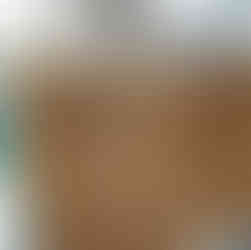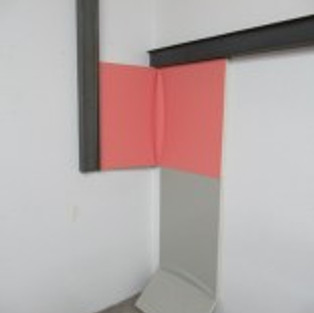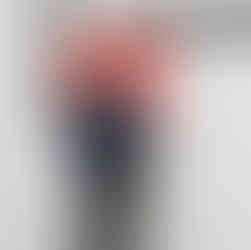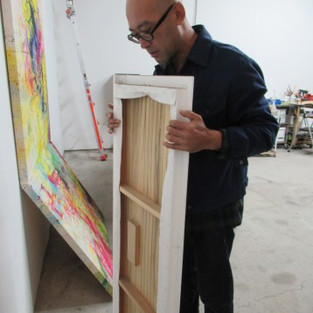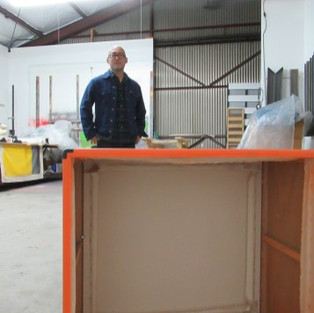
Kaz Oshiro; Photo credit Gary Brewer
Kaz Oshiro: Signs of Life
“The limits of my language means the limits of my world…To imagine a language is to imagine a life form.” ~ Ludwig Wittgenstein
Written by Gary Brewer Plato’s allegory of the cave speaks to the limits of our perception’s ability to understand what is “real”. Plato believed that only the idea of form is true and that this exists in the mind as an ideal form. What we perceive are only the shadows illuminated by the light of mind casting the imperfect shadows of these forms on the wall of a cave. Many cultures- Buddhist, Hindu, Christianity, etc, view the physical world as an illusion: Maya in Buddhism, and the veil of tears in Christianity, because it is impermanent and made of corruptible matter: it is but a temporal mirage. These beliefs have a profound affect on the structure of a society and its culture. This notion of illusion and of what is real is a primal factor in the work of Kaz Oshiro.
As we spoke in his studio, Kaz brought up Plato’s Cave early in our conversation. “Plato’s idea of form, of what reality is, has a social aspect to it. To build from this fundamental truth of what reality is- to how one constructs and controls a nation state- is a profound aspect of Plato’s thoughts. There is something in this thinking that my work touches upon: that how we perceive reality influences and shapes culture.”
Kaz creates painted objects. They are more painting than sculpture, even though they are three-dimensional and easily recognizable objects from the world we all know. A dumpster covered in splashes of paint banged up and dinged- the dilapidated distress of time and use, scarring it’s surface. An amplifier used for musicians performances; a refrigerator- its white surface marred with the skin oil and the dirt of fingers that have repeatedly opened and closed the door- the owner’s lack of cleanliness, a marker of time and mortality. I-beams, with welded words denoting their owner, destination or use embossing the surface, rust and other surface blemishes- give the objects an illusion that completely controls our interpretation of reality. But when one looks on the backside to see the stretcher bars and canvas that Kaz builds with elegant craft, it reveals the constructed illusion that he has created. It is a moment where one’s consciousness is given an opportunity to see itself in the process of perception and interpretation, and then watch it dissolve and arrive to another understanding of what is real.

Kaz Oshiro; Photo credit Gary Brewer
When I asked Kaz what it is he is doing, he said, “ I have a need to make something physically, to create with my hands. It gives the object a certain quality when I make it myself, something of myself gets into the work. I never have anyone else work on any part of my art. The objects I create are a size that I can install without help. I do not want anything so big that I cannot set it up alone. The objects I make, like the amplifiers, can be stacked up or set side by side as serial units, so if I want something 50 feet wide, I can set them up in a row and it works as a single piece. I try to embed in the work a secret code that will only be understood in twenty, fifty or one hundred years from now. My work is meant to engage people philosophically and make them think. I see my art as painting more than sculpture. There is something in painting, the way the hand leaves its mark, that captures more of the artist’s subjectivity.”
The impact of his work is uncanny. The paintings convey a subjective reality; it is a compressed narrative of the world around us. Time, distress, and its affect on the brick-a-brac of the shopworn world, fill his studio. However, these visual haiku reveal something profound about our understanding of the world. When one walks around the back, where the stretcher bars and canvas can be seen and sees the thing as itself- this contrived, complex gestalt of illusion and reality- it is an experience where subject and object become a singular moment of self-refection. Kaz mentioned that he had an epiphany, a form of enlightenment, when he first saw Naim June Paik’s TV Buddha. In that moment, this perfect poetic metaphor that transformed a profound ancient truth of the Buddhist practice of sitting meditation and mixed it with the contemporary media age in which we live, shook Kaz and awoke within him a desire to find a way to express this level of philosophical depth, complexity and humor in a singular gestalt.
As we spoke, he mentioned his love of abstract painting: De Kooning, Rothko, Reinhardt and Pollock etc, but that they had explored the outer edges of possibility of that form of painting and he had to find a way to create work that was true to his own needs; that expressed something that was new and vital. “Though I loved their work, I could not create that kind of gestural painting, so I found a way that the illusion of a drip of ketchup on an appliance would refer to those gestural marks of De Kooning for instance, but in a way that was true to my vision. “ There is a wry sense of humor in his work, an oblique language that with time reveals a marriage of sincerity and seriousness mixed with a quizzical wink; these paintings are the visual equivalent of a Zen Koan; they are the sound of one hand clapping.
Standing in his studio and looking at the different individual painting/sculptures and how they work as a total installation, is somewhat Twilight Zone-like. They convey an actuality that is completely convincing: but seeing the backside and understanding what they are, creates a strange tension, a stasis that amplifies their presence. They express a sense of the temporality of existence and of our increasing awareness- through physics, quantum theory and the philosophically obtuse theories of time and space coming out of astrophysics- that what we know and see and what actually is going on, is strangely out of sync. In that incongruity, Kaz’s work acts as an opening, a space between the synaptic leaps of chemical information across a void, and gives us pause to question the contours of perception and knowledge.
These painting/sculptures are immaculate in conception and execution with a clarity that resonates; like a bell struck in a silent room. The subjective forces that shape the work are complex. As artists we seek to define a space to create that reflects our conscious and subconscious needs. Kaz Oshiro’s works are highly crafted- the effort to communicate from the mind though the somatic pulsations of hands and fingertips- informs each piece with subtle marks and incidents that capture these signs of life. The moment when the curtain is drawn, revealing the artifice behind the mirage is an awakening; a pause in the instantaneous flow of our apprehension of the phenomenal world. It is a sleight of hand, revealed with a knowing wink, but delivered in a matter of fact style.
Aesthetics is a branch of philosophy dealing with the idea of beauty. Ideas can be beautiful when wrought with the immaculate clarity of the mind searching for some glimmer of truth in the fleeting world that flickers through our consciousness. Kaz Oshiro seeks to send a slender ray of light illuminating a shimmering glimpse of the act of cognition and the tenuous nature of our ability to perceive what is real. In that brief pause where two realities fluctuate, he has created a subtle poetry reflecting the very act of perceiving what is known and what is unknown.
#losangeles #california #losangelesartist #art #painting #shoeboxpr #laverne #losangelesart #contemporaryart #southerncalifornia #abstract #collage #artgallery #artinterview #gallery #museum #artandcake #artexhibition #installation #fineart #artist #soloshow #garybrewer #mixedmedia #arts #artreview #artmagazine #ArtandCulture #exhibition #KazOshiro #exhibit



